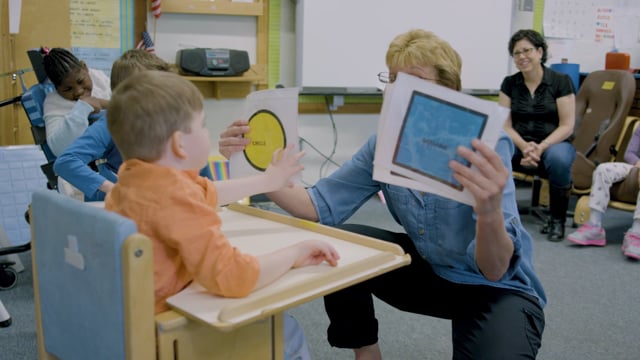Caring for Your Child With Cerebral Palsy (CP): Age 6–12
When your child with cerebral palsy is ready for school, expect a whole new world of opportunities. From academics and skill-building to navigating friendships and social situations, there’s a lot to do. The right education plan can help your child reach their full potential.
-

Caring for Your Child with CP
Here’s what to expect as your child grows – and how to plan for it – so that you can give your child the best start.
Follow this 7-step checklist to help your child succeed during the elementary school years.
Step 1: Look Into an IEP
Many kids with CP can benefit from an individualized education program (IEP). If your child receives services, an IEP may already be in place. If not, talk to the school to see how you can set one up, if needed.
The IEP team can decide whether your child needs the help of a classroom aide or would benefit from physical therapy, speech therapy, or occupational therapy. While you can't insist upon certain services, you can appeal the IEP if you feel that it doesn't meet your child's needs.
If your child does not qualify for an IEP, a 504 plan also can help with learning. This plan makes accommodations that improve a child's learning experience. This can include sitting closer to the front of the class, or having more time to take tests.
Step 2: Consider Assistive Devices
Technology can help kids with CP complete tasks and reach goals that would be too hard to do on their own. For a child who has trouble walking independently, forearm crutches, braces, a walker, a gait trainer, or a wheelchair can help. For kids who have trouble speaking, computer programs and electronic devices can vocalize their thoughts.
Your child's physical, occupational, and speech therapists can help identify which assistive devices will benefit your child the most. They also can help you learn how to get these devices.
Step 3: Plan Activities and Play Dates
Social activities are just as important for a child with cerebral palsy as they are for all kids. Many sports programs, such as Special Olympics, Little League Challenger Division, and TOPSoccer, can help your child to be physically active while also meeting new friends who have similar challenges. Therapeutic horseback riding programs and aquatic therapy are also great ways to keep kids active.
Provide opportunities for your child to make friends with other kids who have CP, and also those who don’t. Friendships help all kids develop important social skills and make them more sensitive to the needs of others.
Step 4: Secure Your Child's Future
If you have not written a will or set up a legal and financial plan for your child's future, it's not too late. Talk with a lawyer who practices special needs law and a financial advisor to prepare financially for your child's adulthood.
If you have already written a will, review it from time to time to make sure that the custodial plan you made when your child was younger is still the best option.
Step 5: Find Support
Dealing with the day-to-day challenges of parenting a child with CP can be overwhelming. Having a strong support network can help you power through even the most challenging days. Here are some ideas:
- Connect with other parents who understand your situation. Find a local support group or get involved with your area United Cerebral Palsy affiliate. If a local group isn't available, look for online support.
- Find respite care. Just a few hours a week can give you the time you need to recharge. ARCH National Respite Network has a database of respite services.
- Enlist family and friends. They often want to help, but don’t know how. Make a list of things they can do — from carpooling to running errands — and let them choose.
Step 6: Address Emotional Needs
Kids with disabilities sometimes feel different from other children, and this can make them feel angry or sad. They may get left out or bullied. Be on the lookout for signs of bullying, such as:
- not wanting to go to school
- eating less than usual
- having trouble sleeping
- crying for no known reason
If you think your child is being bullied, speak with school officials as soon as possible. At home, talk about it and use role play to practice how to ignore bullies by staying calm and walking away in the moment. Ask your child to always report problems like these to trusted friends and teachers.
Help build kids’ confidence by finding activities they enjoy.
Step 7: Prepare for Puberty
Puberty is when a child’s body matures and changes. Talk to your doctor about what’s normal and what to expect so that you can prepare your child. It’s normal for kids to have:
- new hair growth, body odor, and acne (if needed, a home health aide can help with bathing and other self-care)
- a need for privacy; emotional highs and lows
- an interest in sex, which is normal and healthy. Talk openly about these feelings. Explain the differences between appropriate touch and inappropriate touch, and ask them to tell you right away if someone crosses the line.
Boys might need reassurance that erections and wet dreams are normal. Girls will get their periods and will learn new hygiene habits, but for some this can be confusing or upsetting. Sometimes medicines can be given to stop periods. Talk with the care team about what’s best.


